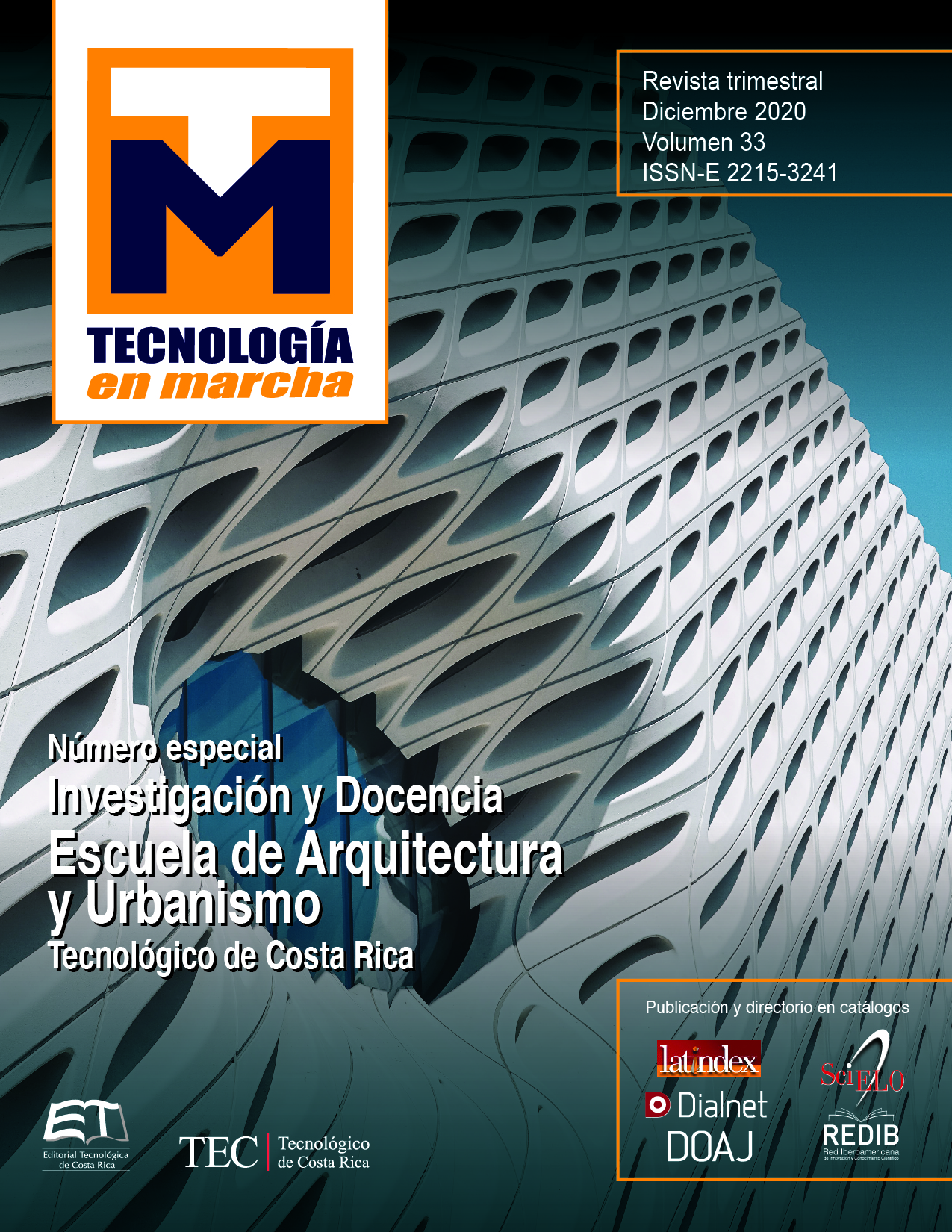The experience of inhabiting the domestic interior as a way to rethink the apartment building
Main Article Content
Abstract
As result of the increase in population in urban centers, a new type of building has had a greater impact on the urban landscape, the apartment tower. This typology changes the dynamics of socialization between neighbors and eliminates the neighborhood condition as they are separate architectural objects from the city. Due to economic interests, these developments have reduced living spaces as much as possible, offering units between 30 and 70 m2 without access to proper lighting and natural ventilation or outdoor spaces such as balconies or patios. The quality of life of the inhabitants is highly deteriorated due to these high-density housing formats, affecting moods and interpersonal relationships.
This article analyzes the development of this typology, giving a historical and social perspective of its beginnings as part of modern architecture and its future potential in the current context. The objective of the study is to offer both architectural and social management and organization alternatives that allow real estate development that contributes to better sociability in the city and a better quality of life for its inhabitants. Emphasizing the symbiotic relationship between the small scale of the housing building and the domestic interior and the city as a collective construction.
Article Details

This work is licensed under a Creative Commons Attribution-NonCommercial-NoDerivatives 4.0 International License.
Los autores conservan los derechos de autor y ceden a la revista el derecho de la primera publicación y pueda editarlo, reproducirlo, distribuirlo, exhibirlo y comunicarlo en el país y en el extranjero mediante medios impresos y electrónicos. Asimismo, asumen el compromiso sobre cualquier litigio o reclamación relacionada con derechos de propiedad intelectual, exonerando de responsabilidad a la Editorial Tecnológica de Costa Rica. Además, se establece que los autores pueden realizar otros acuerdos contractuales independientes y adicionales para la distribución no exclusiva de la versión del artículo publicado en esta revista (p. ej., incluirlo en un repositorio institucional o publicarlo en un libro) siempre que indiquen claramente que el trabajo se publicó por primera vez en esta revista.
References
I. Ijabs, «Governing Invisibly: Authority and Apartment Living,» de The architecture of together and apart, Latvia, New Theatre Institute of Latvia, 2018, pp. 19-24.
L. Corbusier, Towards a New Architecture, Nueva York: Dover Publication Inc., 1931, pp. 6-7.
P. Sloterdijk, «Cell Block, Egospheres, Self-Container: The apartment as a co-isolated existence,» de The Architecture of Together and apart, Latvia, New Theatre Institute of Latvia, 2018, pp. 37-45, 171-177.
I. Ábalos, “Energía, capitalismo, rascacielos. No-Stop City,” in Iñaki Ábalos Textos Críticos, Madrid, Ediciones Asimétricas, 2018, p. 111.
I. Ábalos, “Verticalism,” in Essays on Thermodynamics, Architecture and Beauty, Nueva York, Actar Publishers, 2015, pp. 98-111.
I. Ábalos, “Une Maison-Un Palais,” in Habitar la ciudad, Ciudad de México, Arquine, S.A. de C.V., 2016, pp. 18-27.
E. G. Cristina Díaz, “Conferencia: Third Natures,” ETS de Arquitectura Universidad de Málaga, Malaga, 2015.
R. A. Gorny, “A Relational Conception of Living Together/Apart,” in The Architecture of Together and Apart, Latvia, New Theatre Institute of Latvia, 2018, pp. 179-187.
S. Stavrides, Common Space: The city as Commons, Londres: ZEN Books, 2016.
1. H. MAIO, “ARQA Internacional,” 13 Junio 2018. [Online]. Available: https://arqa.com/arquitectura/maiobloque-de-viviendas-en-barcelona.html. [Accessed 20 Abril 2020].
T. Martínez and E. Calderón, Entrevistados, Visión futura para el desarrollo de proyectos de vivienda colectiva vertical en Costa Rica. [Entrevista]. 15 mayo 2020.

